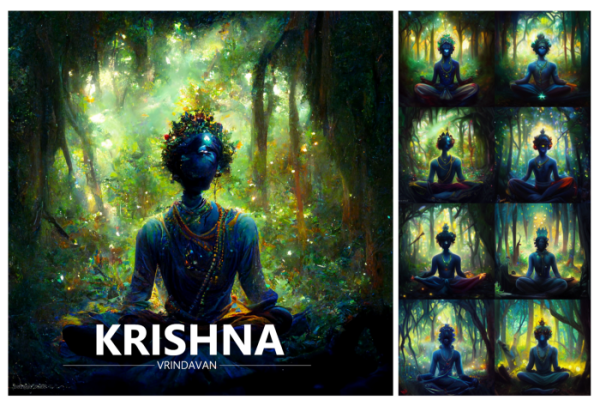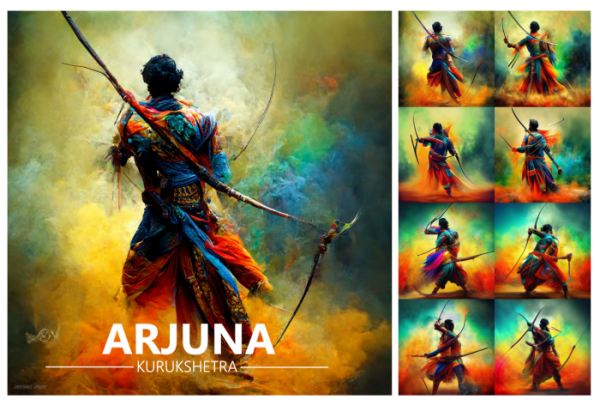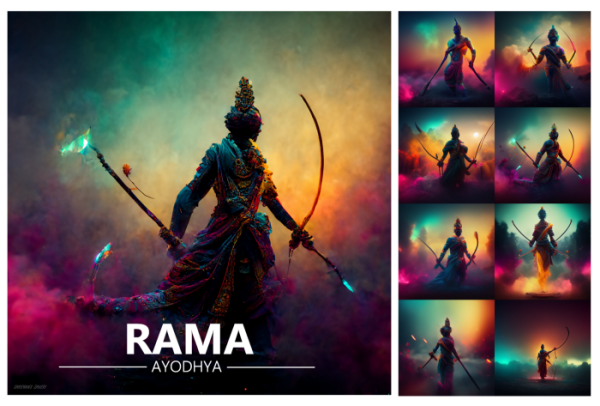The new toy on the block is AI-generated art. It is a wonderland filled with endless possibilities and is very scary at the same time. Every day, the average person has multiple interactions with systems that are based on artificial intelligence. We use it when we shop, when we choose what restaurants to eat at, and when we trust our money with financial organizations. The role of AI in modern society is already prominent, but until recently, it has mostly been in more “logical” spaces. Until now these were working in the background. Now they are taking up more of center stage in our lives. The new trending technology is the development of artificial intelligence that can generate art. This AI is poised to change creative industries as we know them.
Artificial intelligence has played a prominent role in advancements in a wide range of industries, but now, it has its eyes set on art. Artistic renderings are being created by artificial intelligence systems on a daily basis, with many people using these generators to create mesmerizing designs. These systems are able to analyze an insanely high volume of art styles and information, then generate completely unique pieces in a wide variety of styles.
At the center of the power behind AI-generated art is the use of complex algorithms. These algorithms can help to “learn” about art and different artistic styles through text and images. From learning about color palettes to design preferences, these systems can find common patterns in different art pieces. This information is then used to create an original — and often beautiful — piece of art.
With the growing interest in AI-generated art, more platforms are entering the industry. Already, prominent platforms are taking over and generating incredible pieces of art using different algorithms. Dall-E is an AI-generated art platform that can generate images from text with some truly amazing results. MidJourney is another popular platform that is currently in the beta stage of its process, but its early works are already catching attention online. This self-funded creative system aims to explore the capacity of imaginative design. It feeds on texts called ‘prompts’ and generates vibrant and dreamy images that can rival the work of even the most dedicated artists. I took the liberty to experiment with MidJourney and I was absolutely blown by the possibilities. I am an artist myself and when I fed prompts to the AI, I waited patiently to see what it will deliver. As the image started to manifest and I saw the creation come to life, pixel-by-pixel, I was in awe

With these developments, many people are wondering what this means for art as we know it. When the average dedicated AI system has the ability to create compelling works of art, what does it mean for the future of the industry? This also got me thinking, what about my future as an artist? As of today, this surely helps me to better my art. But will it replace me tomorrow? Can this AI-generated art be classified as art? Since it is an algorithm that is looking through the internet for information and then creates unique pieces of art. How will these definitions evolve for the future?
Currently, AI-generated art is catching attention for very specific reasons — it is very impressive, efficient, and has the fastest turn-around time ever. I was able to create multiple options in just a few minutes. Artificial intelligence has proven that it has the capacity to rival some of the most talented human creators in a fraction of the time. The clear advantage of AI-generated art is the timeline that it offers. While an artist might spend weeks on a single drawing, AI can do it quickly and efficiently. This is a huge benefit that might be able to save a substantial amount of time and funding in creative fields. While this is good, it is also scary.

With this shift, it seems likely that AI-generated art will only become more prominent over time. Though artificial intelligence is currently making vibrant and mesmerizing images, this is only the start. As this technology continues to advance, it seems likely that it will play a more prominent role in artistic spaces. Unlike humans, it never sleeps or stops. It is constantly learning from the millions of data points that it is gathering every day.
Though artificial intelligence does present many opportunities for advancement in terms of timeline and quality, it isn’t without limitations. Artificial intelligence is limited by its algorithms — and there is a lot of concern about bias. With AI-generated art, we will need to take a much closer look at what kind of content it is generating and how biased data can influence it for the worst. And not to forget, as the tools get better, so does its potential for misuse. There is no gatekeeper here to stop people from exploiting these AI based tools. As we move forward, it is also possible that copyright laws as we know them might change forever. Because the boundaries will blur as copyright issues crop up from the usage of AI art.

The future of artificial intelligence and its role in creative spaces is something that we can truly only speculate about. However, impacts on artists and creators seems very likely down the line. If production companies can invest in a system that will help them to generate countless works of art, they might see more value there than in human creators. AI art is here to stay, and it is likely to soon evolve into other mediums with this same level of success, like animation, music and writing. These advancements are very exciting, but they also come with huge implications for the future of creative spaces. While some artists are going to benefit from the ability to add new creative mediums to their works of art, others might very well find themselves out of work. As technology advances, some of our best novels, images, and films might come from machines that know what we want better than we do. But will it ever beat the masterpieces that came from immense human talent? From the hard work and perseverance that a human is capable off? I think not. As this technology continues to improve, we will see if it will change creative industries for the better — or make them worse.
About the Author
Shreyans Zaveri is an author and filmmaker. He works towards sustainability and conservation. Some of his films are also focused on the same. He is from India and currently works in the Silicon Valley, Bay area in California.
With over 9 years of industry experience in film and visual effects, Shreyans Zaveri has worked and studied across the globe. Some of his popular works have garnered over 9 million views on YouTube.
References –
For a full list of references and citations please visit – https://shreyanszaveri.medium.com/ai-generated-art-its-influence-on-the-future-of-creative-industries-31299feac258
Media Contact
Company Name: SRZPixelpro
Contact Person: Kiara Quinn
Email: Send Email
City: Santa Clara
State: CA
Country: United States
Website: www.srzpixelpro.com
